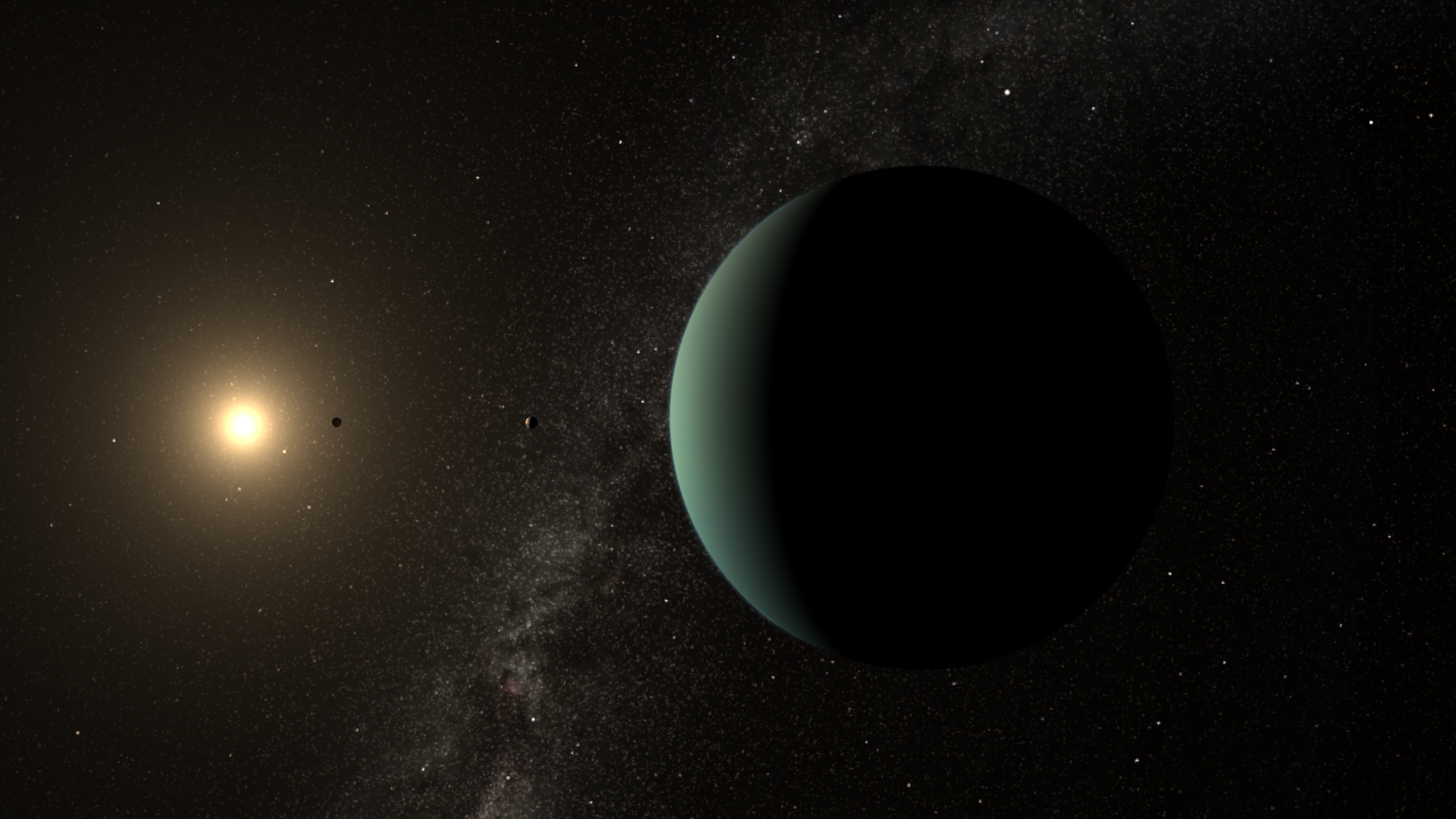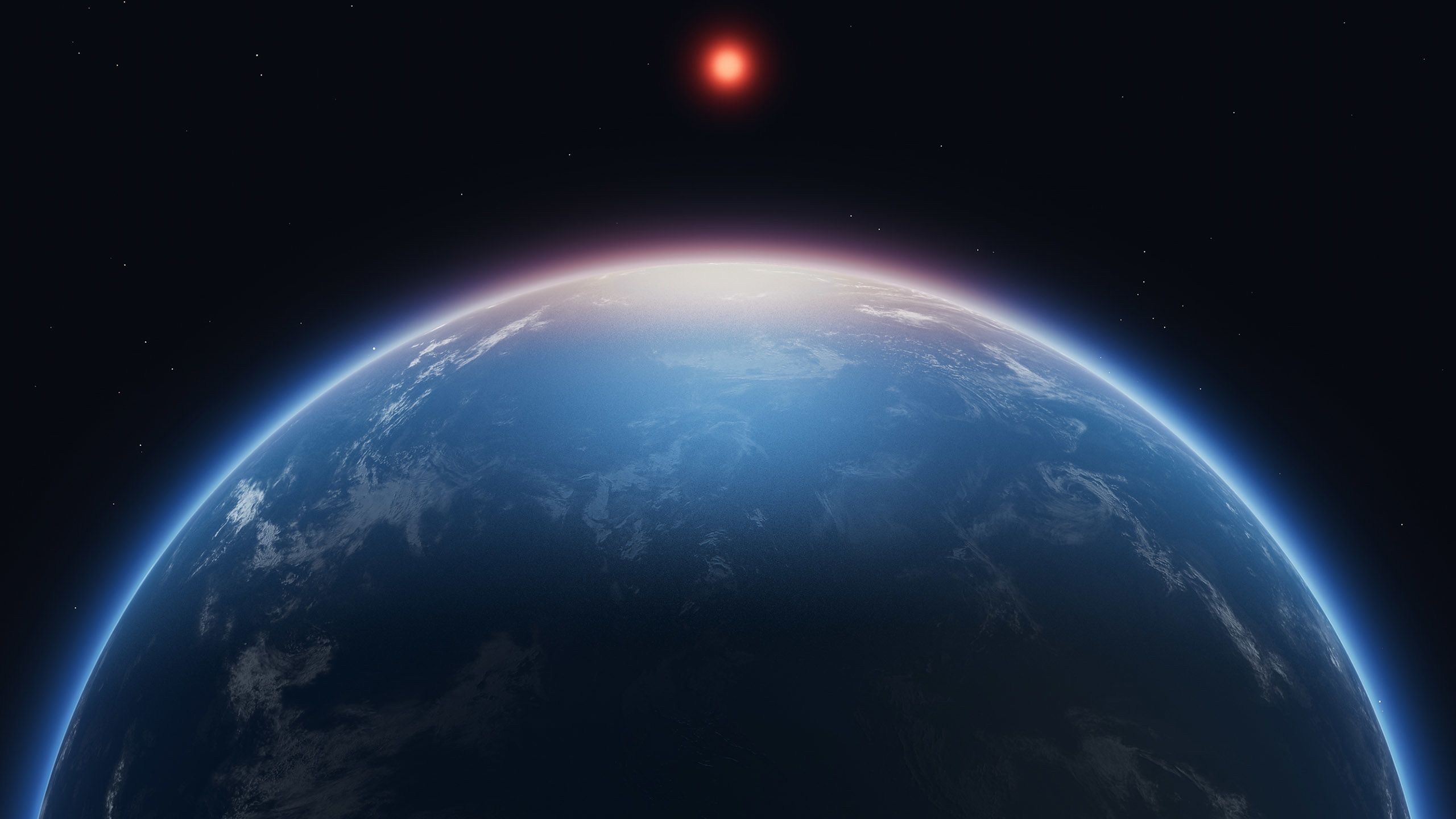Get the latest tech news
A candidate giant planet imaged in the habitable zone of α Cen A
We report on coronagraphic observations of the nearest solar-type star, $α$ Cen A, using the MIRI instrument on the James Webb Space Telescope. With three epochs of observation (August 2024, February 2025, and April 2025), we achieve a sensitivity sufficient to detect $T_{\rm eff}\approx$ 225-250 K (1-1.2 $R_{\rm Jup}$) planets between 1"-2" and exozodiacal dust emission at the level of $>$5-8$\times$ the brightness of our own zodiacal cloud. The lack of exozodiacal dust emission sets an unprecedented limit of a few times the brightness of our own zodiacal cloud$-$a factor of $\gtrsim$10 more sensitive than measured toward any other stellar system to date. In August 2024, we detected a F$_ν$(15.5 $μ$m) = 3.5 mJy point source, called $S1$, at a separation of 1.5" from $α$ Cen A. Because the August 2024 epoch had only one successful observation at a single roll angle, it is not possible to unambiguously confirm $S1$ as a bona fide planet. Our analysis confirms that $S1$ is neither a background nor a foreground object. $S1$ is not recovered in the February and April 2025 epochs. However, if $S1$ is the counterpart of the object, $C1$, seen by the VLT/NEAR program in 2019, we find that there is a 52% chance that the $S1+C1$ candidate was missed in both follow-up JWST/MIRI observations due to orbital motion. Incorporating constraints from the non-detections, we obtain families of dynamically stable orbits for $S1+C1$ with periods between 2-3 years. These suggest that the planet candidate is on an eccentric ($e \approx 0.4$) orbit significantly inclined with respect to $α$ Cen AB orbital plane ($i_{\rm mutual} \approx 50^\circ$, or $\approx 130^\circ$). Based on the photometry and orbital properties, the planet candidate could have a temperature of 225 K, a radius of $\approx$1-1.1 $R_{\rm Jup}$ and a mass between 90-150 $M_{\rm Earth}$, consistent with RV limits.
Authors: Charles Beichman, Aniket Sanghi, Dimitri Mawet, Pierre Kervella, Kevin Wagner, Billy Quarles, Jack J. Lissauer, Max Sommer, Mark Wyatt, Nicolas Godoy, William O. Balmer, Laurent Pueyo, Jorge Llop-Sayson, Jonathan Aguilar, Rachel Akeson, Ruslan Belikov, Anthony Boccaletti, Elodie Choquet, Edward Fomalont, Thomas Henning, Dean Hines, Renyu Hu, Pierre-Olivier Lagage, Jarron Leisenring, James Mang, Michael Ressler, Eugene Serabyn, Pascal Tremblin, Marie Ygouf, Mantas Zilinskas View a PDF of the paper titled Worlds Next Door: A Candidate Giant Planet Imaged in the Habitable Zone of $\alpha$ Cen A. I. Observations, Orbital and Physical Properties, and Exozodi Upper Limits, by Charles Beichman and 29 other authors With three epochs of observation (August 2024, February 2025, and April 2025), we achieve a sensitivity sufficient to detect $T_{\rm eff}\approx$ 225-250 K (1-1.2 $R_{\rm Jup}$) planets between 1"-2" and exozodiacal dust emission at the level of $>$5-8$\times$ the brightness of our own zodiacal cloud.
Or read this on Hacker News
